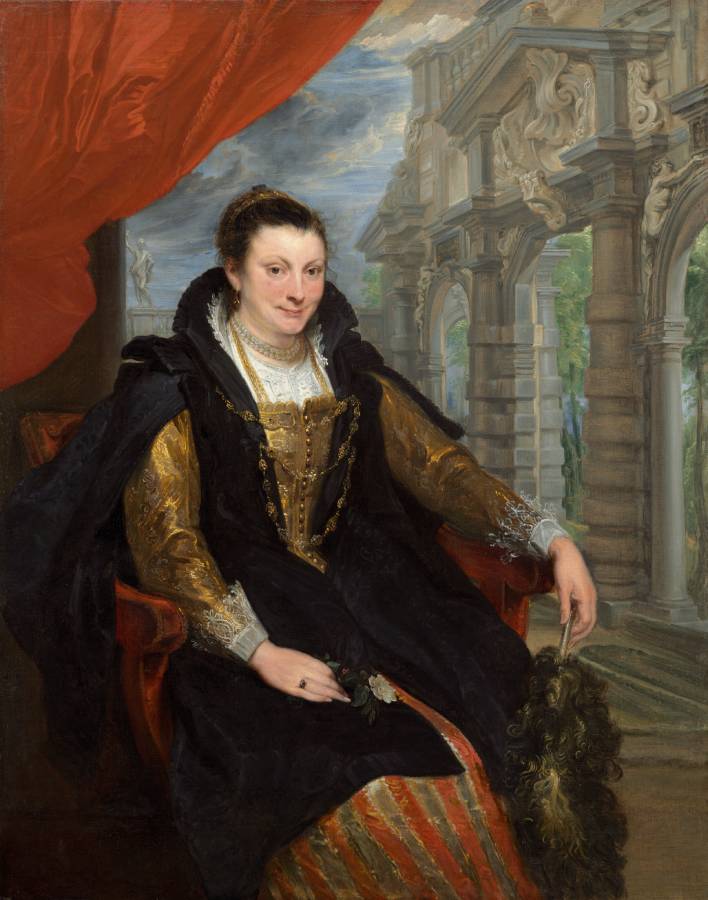Van Dyck, Anthony (1599-1641)
Isabella Brant
1621
Oil on canvas, 153 x 120 cm
National Gallery of Art, Washington
Isabella Brant was the first wife of the Antwerp master Peter Paul Rubens, whom she married shortly after his return from Italy in 1609. Just before Anthony van Dyck, one-time protégé and frequent collaborator of Rubens, left Antwerp in October 1621 for his own extended stay in Italy, he apparently presented this portrait to his mentor. Given the close personal and professional relationship between Van Dyck and Rubens, it is not surprising that Van Dyck, whose proficiency in portraiture was widely acknowledged at the time, would give a portrait of Rubens‘s beloved wife as a token of his appreciation for all his mentor had done for him. Van Dyck probably based this boldly executed portrait of Isabella on a likeness Rubens had drawn of his alert and smiling wife around 1620, and it is said that Rubens never ceased to praise Van Dyck‘s rendition. The monumental Italianate partition at the entrance to the garden at Rubens‘s mansion, an Antwerp landmark designed by the artist-owner himself as one of northern Europe’s first classically styled structures, provides a fitting setting. Rubens had placed sculptures of Mercury, god of painters, and Minerva, goddess of wisdom and learning, atop the screen. In his portrait, Van Dyck moved the statue of Minerva to an imaginary position behind Isabella‘s right shoulder, reinforcing the link between his sitter and the goddess. Van Dyck added to Isabella‘s liveliness and flair through the angled rhythms of the orange-red curtain behind her, the colorful elegance of her red-and-gold dress, the shimmering gold and jeweled chain draped across her chest, and the clouds passing across the blue sky. Isabella Brant died in 1626 at age 34 of the bubonic plague, leaving behind a desolate Rubens and three children. In 1772, Empress Catherine II of Russia (1729–1796) purchased the portrait as a work by Rubens for her Imperial Hermitage Gallery in Saint Petersburg. It was first correctly attributed to Van Dyck as early as 1895, but the debate about the painting’s authorship continued and Isabella Brant entered the collection of Andrew Mellon—and subsequently the National Gallery of Art—as a Rubens, only to receive its final reattribution to Van Dyck in 1976. (NGA)
See also:
• Brant, Isabella (1591-1626)
